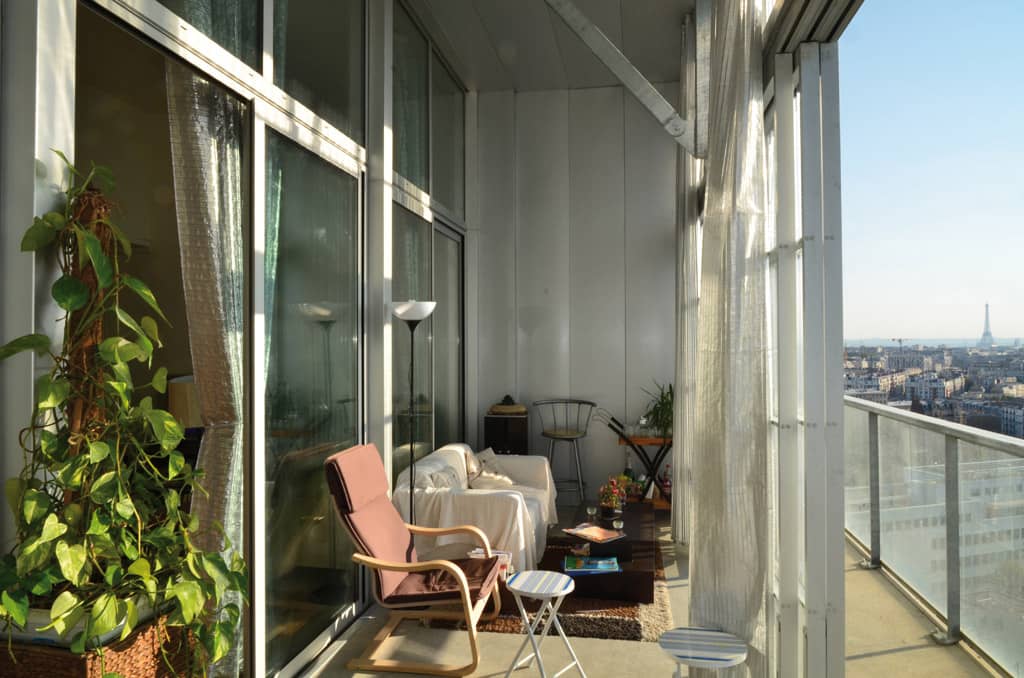
www.buildingsandcities.org/insights/commentaries/lessons-adaptable-housing.html
Key Lessons for Adaptable Housing

A home's adaptive capacity supports an individual's and a community's resilience when faced with different life events and their associated disruptions and consequences.
Frances Holliss (London Metropolitan University) comments on the special issue 'Housing Adaptability'. She identifies two papers making outstanding contributions to the field and explains why they advance the incorporation of flexibility and adaptability into the design of dwellings.
One of the central findings of two decades' research into the architecture of home-based work is that one-size-does-not-fit-all (Holliss, 2007, 2015, 2021). Ranging from the President in the White House to the handbag-maker in a Mumbai informal settlement, from asset manager to car mechanic or childminder to architect, the spatial and environmental needs of the home-based workforce are neither simple nor universal. There is, as a result, no 'silver bullet' - no ideal building type or design that can be rolled out to accommodate the post-Covid increase in home-based work which, if permanent, represents a radical shift in how we inhabit, and therefore need to design, our buildings and cities. In addition to home-based work, the concept of homes for life mean accommodating change over time 'an ageing population, migration, the diversification of household structures' and (Pelsmakers &Warwick 2022, p. 606) and 'responding to unpredictable events such as temporary or chronic disability or spread of disease (e.g. simple furniture changes, reallocating room purposes, moving walls or expanding the dwelling)' (Pelsmakers and Warwick, 2022, p. 609). The capability to respond to change may be needed on a daily, seasonal or longer household cycle basis.
Flexibility / adaptability emerges as one of four key principles that can guide good design in the field of design for home-based work (Holliss, 2021). In this context, Pelsmaker and Warwick's special issue of Buildings and Cities exploring housing adaptability is welcome and timely. While from this perspective all the papers are interesting, two stand out in presenting ideas and findings that make a major contribution to the field.
Research by Peters and Masoudinejad (2022) offers a much-needed new perspective on adaptability in apartment buildings. Houses are generally more adaptable than apartments because they can usually be extended and often have space for a garden room (Partridge, 2021). However 43% of UK homes built since 2002 are small purpose-built flats (MHCLG, 2018); these have provided some of the least comfortable accommodation during the pandemic (Giordano & Carmona, 2021). Peters and Masoudinejad introduce and explore the idea of the 'adaptable balcony'. Their statement (p. 275) 'there is a great potential to better use balconies, and to take greater care in the design of these spaces so that they support adaptability in apartment housing' is indisputable. Their analysis of how effectively to do this gives housing professionals, architects and developers alike an important steer in how apartment housing, both new and regenerated, may better accommodate changing patterns of inhabitation. In their analysis of Lacaton and Vassal's retrofit of Grand Parc in Bordeaux the Pritzker Prize jury remarked how effectively an adaptable balcony can 'carefully add space to existing buildings in the form of generous extensions, winter gardens and balconies that allow for freedom of use and therefore are supportive of the real lives of the residents'. Simultaneously increasing the floor area and inhabitants' agency in how they can use their homes, both functionally and in terms of inside/outside, public/ private spatial relationships, this important new concept has the potential to transform multi-family housing design.
The second outstanding piece, from the perspective of design for home-based work, is Tarpio and Huuhka's (2022) paper on residents' views on adaptable housing. Finding developers to be hesitant to enter this field, due to increased costs and uncertainty of market demand, they set out to create an in-depth understanding of residents' thoughts and views on adaptability. Although a small study involving just seven Finnish households, Tarpio and Huuhka find several features of two virtually-tested adaptable apartments beneficial to their participants. These include the provision of two different entrances and the ability to make part of the flat an independent unit. Two entrances are found to be desirable to separate domestic space from workspace; to give adolescents and young adults different entrances; to allow privacy for different parts of the family; and to allow for future changes, including the ability to divide the apartment into two for intergenerational living, to be able to rent out part of the flat, or as a valuable feature when selling it. The desirability of two entrances in housing is an important theme in design for home-based work, until recently restricted to a few innovative projects. (For example, see Two Door City: Workhome Project and the Piazza Céramique in Maastricht, NL by Jo Janssen Architects.) Tarpio and Huuhka's work reinforces this, using test housing plans and a virtual-reality tool that emerge as viable methods for studying residents' needs and also, potentially, for housing providers to communicate adaptable housing solutions to their customers. Crucially, Tarpio and Huuhka (2022, p. 107) find '…the benefits of adaptability as argued by several theorists over recent decades are not imaginary but factually valued by the study's participants'. This supports the argument and financial case for the provision of adaptable housing that can accommodate diverse households with changing needs.
Adaptability is, however, a slippery concept. Despite attempts to review and clarify, a certain amount of ambiguity and confusion surrounds both the terminology and ideas behind it (Schmidt III & Austin 2016). A number of associated terms, including 'adaptability', 'flexibility', 'convertibility', have the same or broadly similar dictionary definitions i.e. the quality of being able to adjust to new conditions. Like Schneider and Till (2016) before them, Pelsmakers and Warwick start by adopting Steven Groák's (1992) definitions that distinguish between adaptability as 'capable of different social uses', and flexibility as 'capable of different physical arrangements'. Schneider and Till (2016, p. 5) clarify 'where adaptability is based around issues of use, flexibility involves issues of form and technique', interweaving both in their Flexible Housing book - which they freely admitted could equally well have been called 'Adaptable Architecture', had they not wished to avoid confusion with Friedman's (2002) book of a similar title.
These terms are open to different and overlapping interpretations. Unsurprisingly, a degree of inconsistency and ambiguity in terminology and definition is evident in the papers in this special edition, which has resulted in a proliferation of terms. The underlying ideas are eminent however and the language seems likely to settle in time. In the field of design for home-based work, it has been found useful to distinguish between two different categories of change in a way that runs counter to Groák's definitions (Holliss, 2022a).
The first term, flexibility in use, refers to a building's ability to be used in different ways to accommodate the shifting patterns of a home-worker's life without changes to the way it is built. This generally involves spatial adjustments that might, for example, include folding furniture, opening, closing or sliding doors, neutral rooms that change uses etc. The second term, adaptability over time, refers to the capacity for a building to be physically altered or extended, through construction work over its lifetime. (Unfortunately, many contemporary apartments are designed and constructed in such a way that such alterations are not possible.) A House for Artists, the case study included by Pelsmakers and Warwick (2022) in their editorial, illustrates the way a building's capacity to change can be pushed to its limits by designing-in these two approaches from the outset (Holliss, 2022a).
The idea of embedding flexibility and adaptability into housing design, so people can use their homes in ways that may not yet be imagined, has broad implications. UK built-environment governance systems, including planning and property taxation, are organised around a generally binary categorisation of single-use buildings as home or workplace (Holliss, 2015). Mainstream home-based work is having the effect of loosening these systems as, post-Covid, homes are accepted also as workplaces. Truly adaptable housing, specifically designed to accommodate a range of different uses, will challenge these further, increasing the argument either for a gradual relaxation of current systems or for a shift to impact-based governance in which design for home-based work is embedded, as in Japan (Holliss, 2022b).
The special issue adds to an existing body of knowledge on flexibility and adaptability. It provides further evidence that it is both possible, desirable and cost effective to make dwellings that can respond to inhabitants' changing circumstances. The evidence exists, so will policymakers, developers and designers help to mainstream this?
References
Friedman, A. (2002). The Adaptable House: Designing Homes for Change. New York: McGraw Hill. ISBN: 9780071377461
Giordano, V. & Carmona, M. (2021). Home Comforts During Covid-19 Lockdown. London: Place Alliance. https://placealliance.org.uk/research/research-home-comforts/
Groák, S. (1992). Idea of Building : Thought and Action in the Design and Production of Buildings. London: Spon Press.
Holliss, Frances. (2007). The workhome... : a new building type?. (doctoral thesis) London Metropolitan University. http://repository.londonmet.ac.uk/7634/
Holliss, Frances. (2015) Beyond Live/Work: The Architecture of Home-Based Work. London: Routledge,.
Holliss, Frances (2021). Working from home. Built Environment, 47(3), 367-79.
Holliss, Frances. (2022a) A House for Artists. Architecture Today. https://architecturetoday.co.uk/a-house-for-artists-apparata-barking/.
Holliss, Frances. (2022b). Design for working from home. Planning in London, PiL121, Apr-Jun, 57-59.
Ministry of Housing, Communities, Local Government. (2018). English Housing Survey: Floor Space in English Homes - Main Report. London: MHCLG. ISBN 978-1-4098-5292-6
Partridge, J. (2021, May 30). Homeworking drives demand for 'shoffice' space in UK gardens. The Guardian. https://www.theguardian.com/business/2021/may/30/home-working-drives-demand-shoffice-space-uk-gardens-shed-office
Pelsmakers, S., & Warwick, E. (2022). Housing adaptability: new research, emerging practices and challenges. Buildings and Cities, 3(1), 605-618. http://doi.org/10.5334/bc.266
Peters, T. & Masoudinejad, S. (2022). Balconies as adaptable spaces in apartment housing. Buildings and Cities, 3(1), 265-278. http://doi.org/10.5334/bc.191
Schmidt III, R. & Austin, S.A. (2016). Adaptable Architecture : Theory and Practice. London: Routledge.
Schneider, T, & Till, J. (2016). Flexible Housing. London: Routledge.
Tarpio, J., & Huuhka, S. (2022). Residents' views on adaptable housing: a virtual reality-based study. Buildings and Cities, 3(1), 93-110. http://doi.org/10.5334/bc.184
Latest Peer-Reviewed Journal Content
Designing for pro-environmental behaviour change: the aspiration–reality gap
J Simpson & J Uttley
Lifetimes of demolished buildings in US and European cities
J Berglund-Brown, I Dobie, J Hewitt, C De Wolf & J Ochsendorf
Expanding the framework of urban living labs using grassroots methods
T Ahmed, I Delsante & L Migliavacca
Youth engagement in urban living labs: tools, methods and pedagogies
N Charalambous, C Panayi, C Mady, T Augustinčić & D Berc
Co-creating urban transformation: a stakeholder analysis for Germany’s heat transition
P Heger, C Bieber, M Hendawy & A Shooshtari
Placemaking living lab: creating resilient social and spatial infrastructures
M Dodd, N Madabhushi & R Lees
Church pipe organs: historical tuning records as indoor environmental evidence
B Bingley, A Knight & Y Xing
A framework for 1.5°C-aligned GHG budgets in architecture
G Betti, I Spaar, D Bachmann, A Jerosch-Herold, E Kühner, R Yang, K Avhad & S Sinning
Net zero retrofit of the building stock [editorial]
D Godoy-Shimizu & P Steadman
Co-learning in living labs: nurturing civic agency and resilience
A Belfield
The importance of multi-roles and code-switching in living labs
H Noller & A Tarik
Researchers’ shifting roles in living labs for knowledge co-production
C-C Dobre & G Faldi
Increasing civic resilience in urban living labs: city authorities’ roles
E Alatalo, M Laine & M Kyrönviita
Co-curation as civic practice in community engagement
Z Li, M Sunikka-Blank, R Purohit & F Samuel
Preserving buildings: emission reductions from circular economy strategies in Austria
N Alaux, V Kulmer, J Vogel & A Passer
Urban living labs: relationality between institutions and local circularity
P Palo, M Adelfio, J Lundin & E Brandão
Living labs: epistemic modelling, temporariness and land value
J Clossick, T Khonsari & U Steven
Co-creating interventions to prevent mosquito-borne disease transmission in hospitals
O Sloan Wood, E Lupenza, D M Agnello, J B Knudsen, M Msellem, K L Schiøler & F Saleh
Circularity at the neighbourhood scale: co-creative living lab lessons
J Honsa, A Versele, T Van de Kerckhove & C Piccardo
Positive energy districts and energy communities: how living labs create value
E Malakhatka, O Shafqat, A Sandoff & L Thuvander
Built environment governance and professionalism: the end of laissez-faire (again)
S Foxell
Co-creating justice in housing energy transitions through energy living labs
D Ricci, C Leiwakabessy, S van Wieringen, P de Koning & T Konstantinou
HVAC characterisation of existing Canadian buildings for decarbonisation retrofit identification
J Adebisi & J J McArthur
Simulation and the building performance gap [editorial]
M Donn
Developing criteria for effective building-sector commitments in nationally determined contributions
P Graham, K McFarlane & M Taheri
Join Our Community

The most important part of any journal is our people – readers, authors, reviewers, editorial board members and editors. You are cordially invited to join our community by joining our mailing list. We send out occasional emails about the journal – calls for papers, special issues, events and more.
We will not share your email with third parties. Read more



Latest Commentaries
COP30 Report
Matti Kuittinen (Aalto University) reflects on his experience of attending the 2025 UN Conference of the Parties in Belém, Brazil. The roadmaps and commitments failed to deliver the objectives of the 2025 Paris Agreement. However, 2 countries - Japan and Senegal - announced they are creating roadmaps to decarbonise their buildings. An international group of government ministers put housing on the agenda - specifying the need for reduced carbon and energy use along with affordability, quality and climate resilience.
Building-Related Research: New Context, New Challenges
Raymond J. Cole (University of British Columbia) reflects on the key challenges raised in the 34 commissioned essays for Buildings & Cities 5th anniversary. Not only are key research issues identified, but the consequences of changing contexts for conducting research and tailoring its influence on society are highlighted as key areas of action.